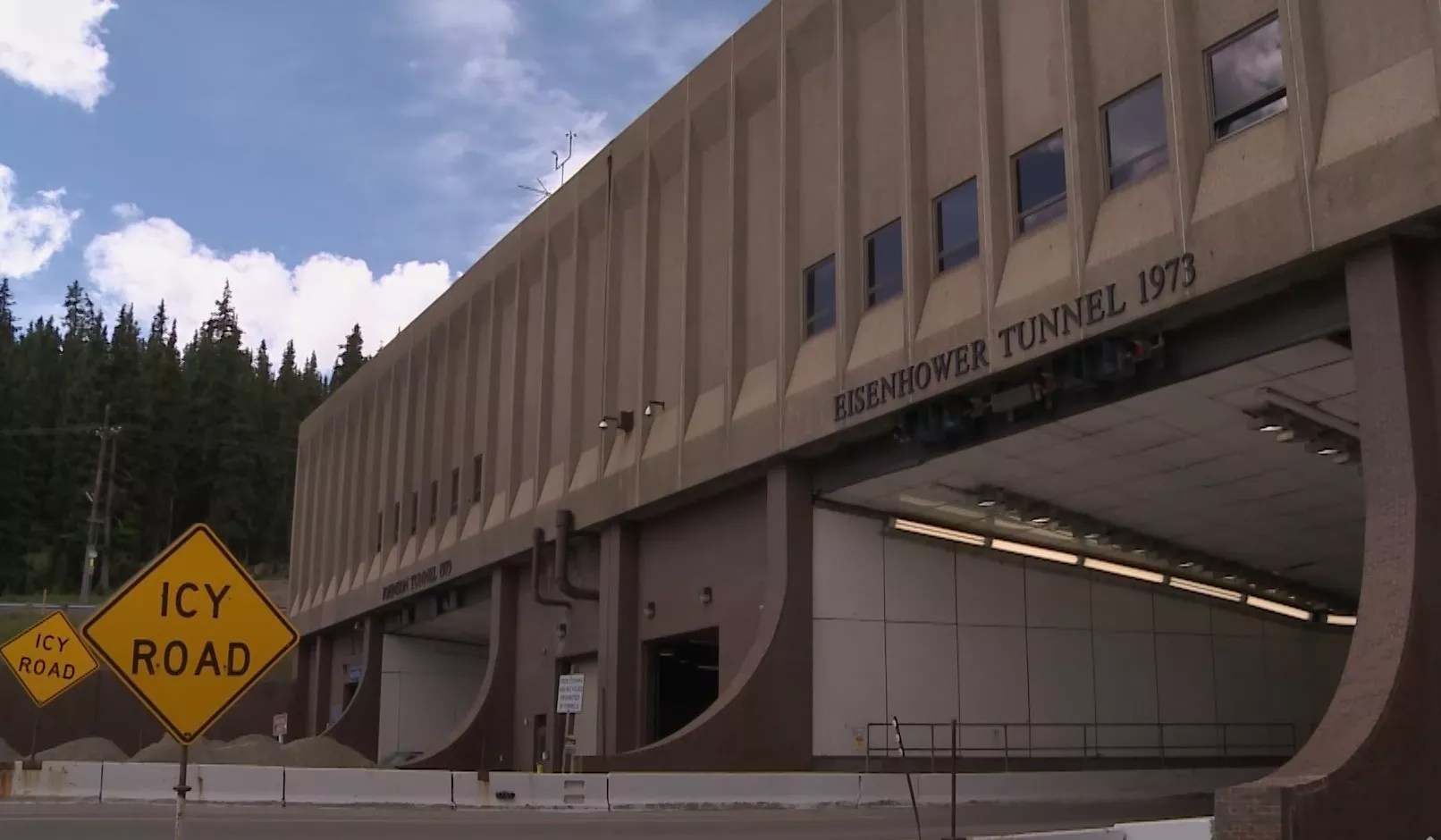

Audio By Carbonatix
The Eisenhower Tunnel isn’t one of Colorado’s primary tourist attractions. That isn’t even its real name. But don’t let its simple utility fool you: The Eisenhower Tunnel is one of the most important facilities in the entire state, generating not only commercial traffic, but greatly increased tourism dollars.
There’s a lot about the tunnel that’s common knowledge: that it actually comprises two double-bore twin tunnels a little over a mile and a half long. That at an elevation of 11,155 feet, it was the highest tunnel in the world for many years, and is still the highest in the United States. That it punches right through the Continental Divide, marking the line of demarcation between the Atlantic and Pacific watersheds. And that it opened for the first time on March 8, 1973 – which means it turned the big 5-0 this year, which the Colorado Department of Transportation and Colorado State Patrol marked a few months ago with “Connecting Colorado for 50 Years.”
But turning fifty wasn’t just a case for celebration. It also indicated it was time to do some repairs, which start today, July 9, when CDOT will begin a project to remove and replace all cameras, variable message boards, lane use signs, and fiber in the tunnel. The work will require overnight alternating traffic with full closures of one direction of travel through the tunnel Sunday through Thursday nights until the project is complete, with a target for summer 2024. In the meantime, there will be traffic stops of at least twenty minutes from 10 p.m. until 5 a.m.
While you wait, you’ll have plenty of time to contemplate these ten facts about the Eisenhower Tunnel:
1. Its original cost in 2023 dollars is estimated somewhere between 2 and 3 billion dollars. That sounds like a lot, but consider that Elon Musk has lost three times that much since he bought Twitter.
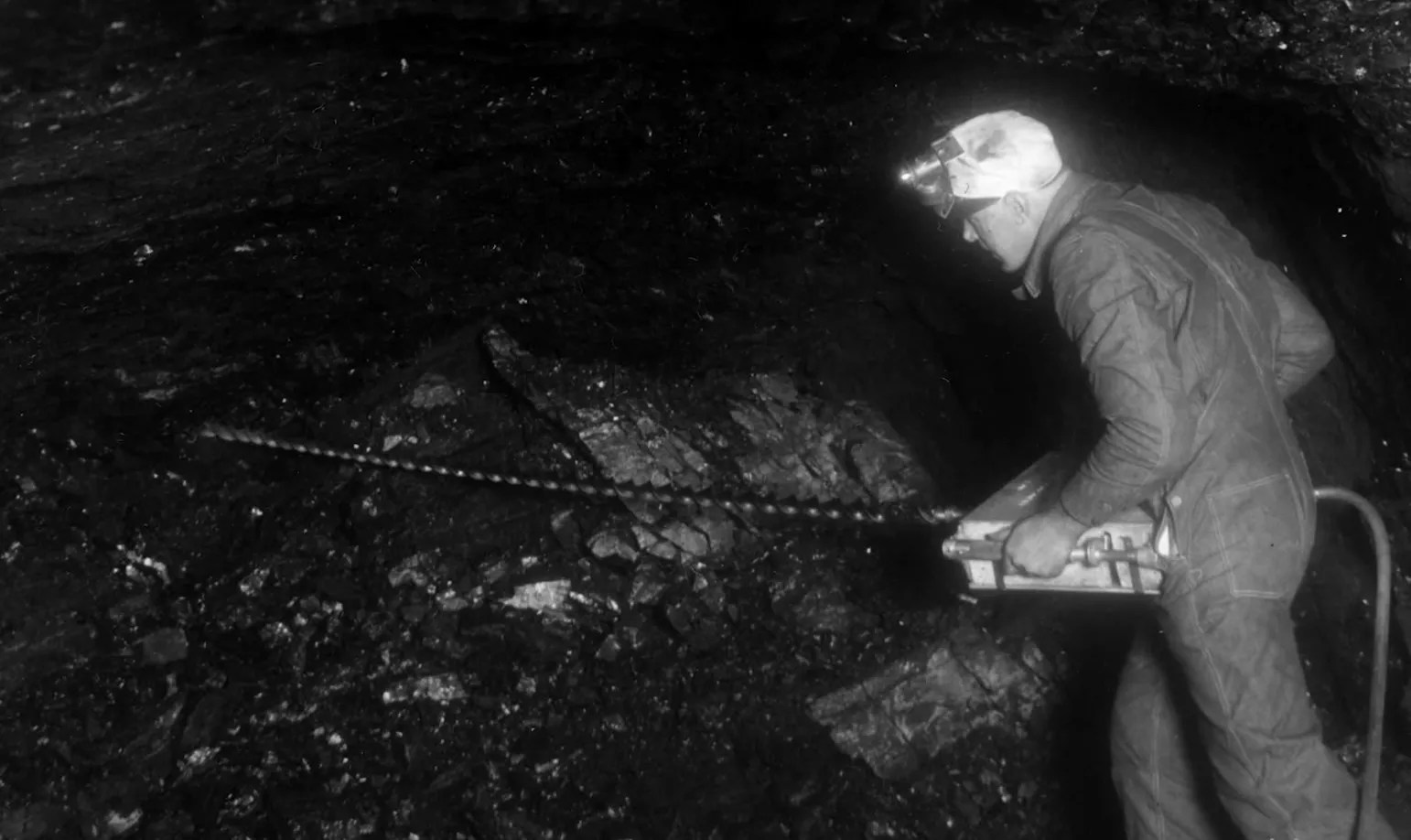
Many of the workers on the tunnel were former miners.
2. The tunnel has seen no traffic fatalities during its five decades. However, seven workers lost their lives in its construction. Compare that to the 96 workers who lost their lives in the construction of Hoover Dam, though, and it seems like a relatively good record – unless you’re related to one of those unlucky seven who gave their lives to connect the Front Range with the Western Slope.
3. Its original name was Straight Creek Tunnel, for the valley at the western portal. Before it opened officially, though, it was renamed for President Dwight D. Eisenhower, who had passed away just a few years earlier. The tunnel’s official name isn’t even the Eisenhower Tunnel; it’s the Eisenhower-Johnson Memorial Tunnel, one name for each of the two bores. It’s the tunnel so nice they named it twice. Or thrice, even.
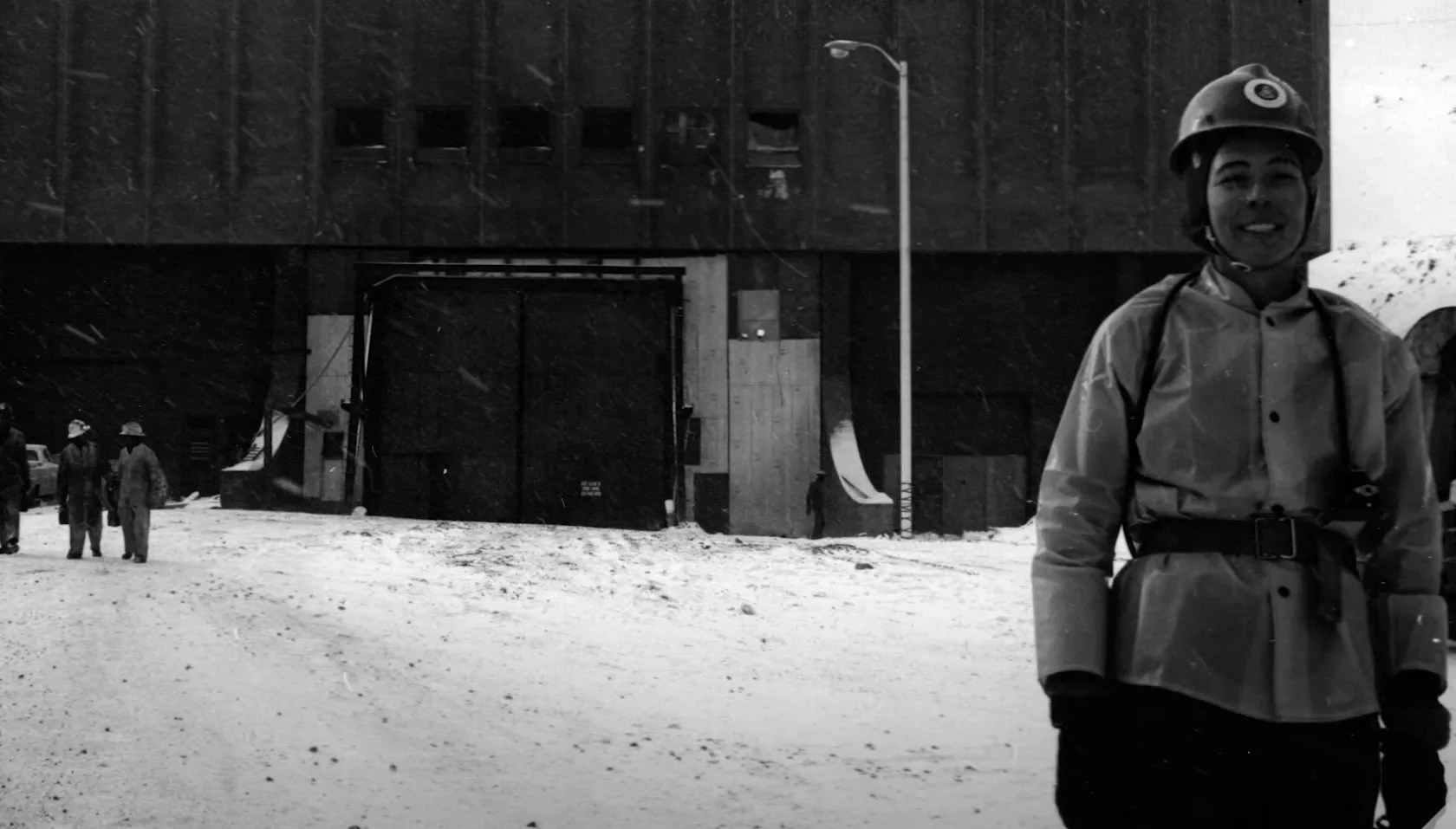
Janet Bonnema, victorious.
4. Its construction is one of Colorado’s earliest tales of women’s rights: Janet Bonnema applied for a position, and the supervisor in charge of hiring misread her name as “James.” She was given the job, but when her gender was revealed, she was put to work doing office work. Bonnema sued the department for the right to work inside the tunnel – especially since she was in better shape than most of the male workers. The workers were largely against her inclusion, reportedly calling her a “jinx” and threatening a walk out if she was allowed to enter the tunnel. Even so, on November 9, 1972, she started work there, and after some media coverage, she folded herself into the otherwise all-male workforce. She wore overalls on her shifts – a “good disguise,” she said.
5. The Eisenhower Memorial Bore was completed in 1973, but its twin, the Johnson Memorial Bore, wasn’t completed until almost 1980. It was named for former Colorado governor and senator Edwin C. Johnson, who was a strong supporter of the interstate highway system, like Ike. On March 20, 1980, a little over 12,000 vehicles passed through the tunnel in 24 hours. Forty years later, on March 20, 2020? Almost the same number – because of the pandemic. In 2019, that number was over 44,000. How much has Colorado grown in fifty years? That much.
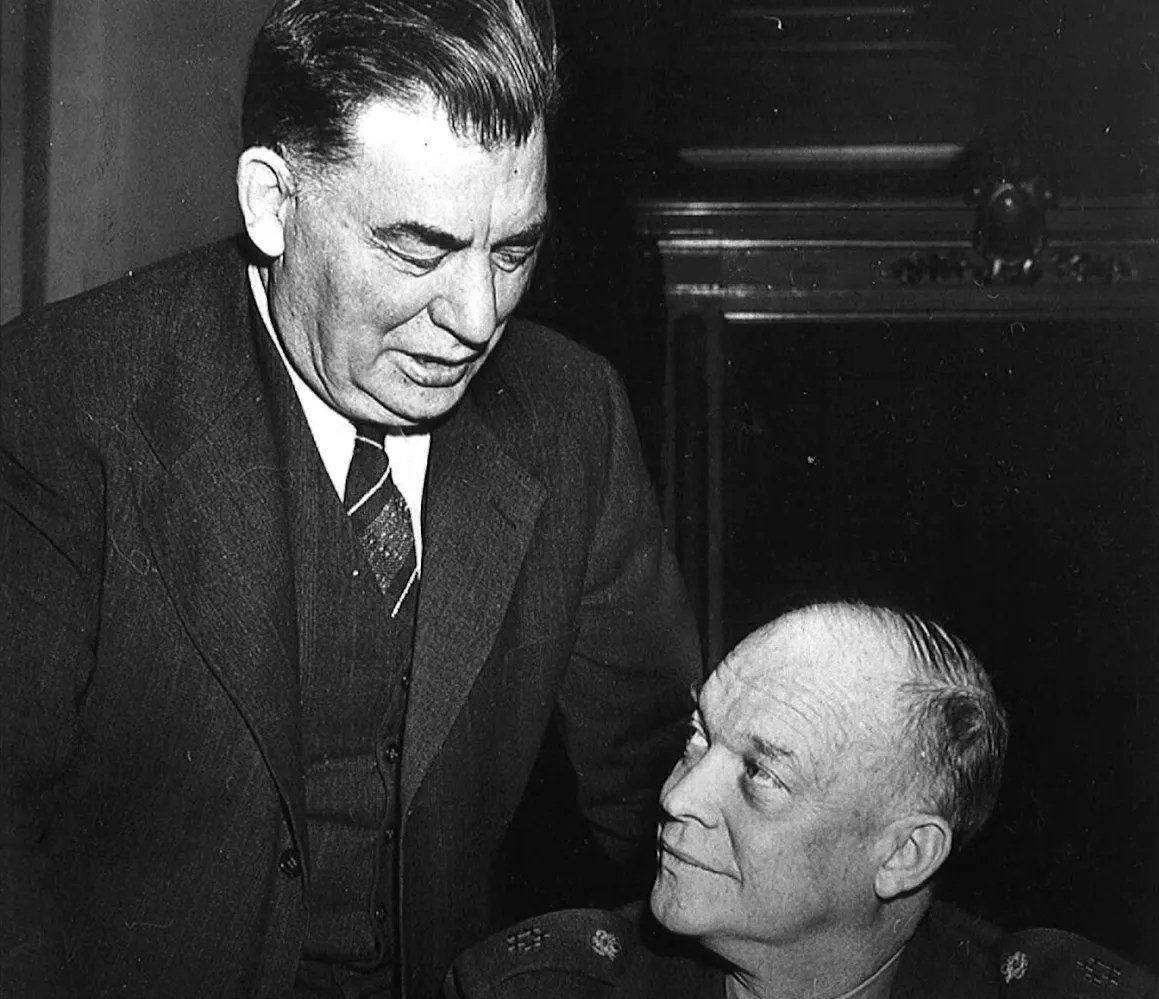
“Big Ed” Johnson and President Dwight D. Eisenhower.
6. There used to be a gasoline-powered tram car that ran the length of the tunnel for quick transport of an attendant in case of an emergency. Why they decided to take a two-stroke engine out of a tunnel that’s over a mile and a half long is (cough, cough) anyone’s guess.
7. It has a full-time staff of 52 to keep it running smoothly, responsible for around-the-clock video surveillance, emergency response, tunnel maintenance and cleaning, snow removal and more. Every one of those employees is a trained firefighter, just in case. And because of the elevation, most of them are also habitual gum users.
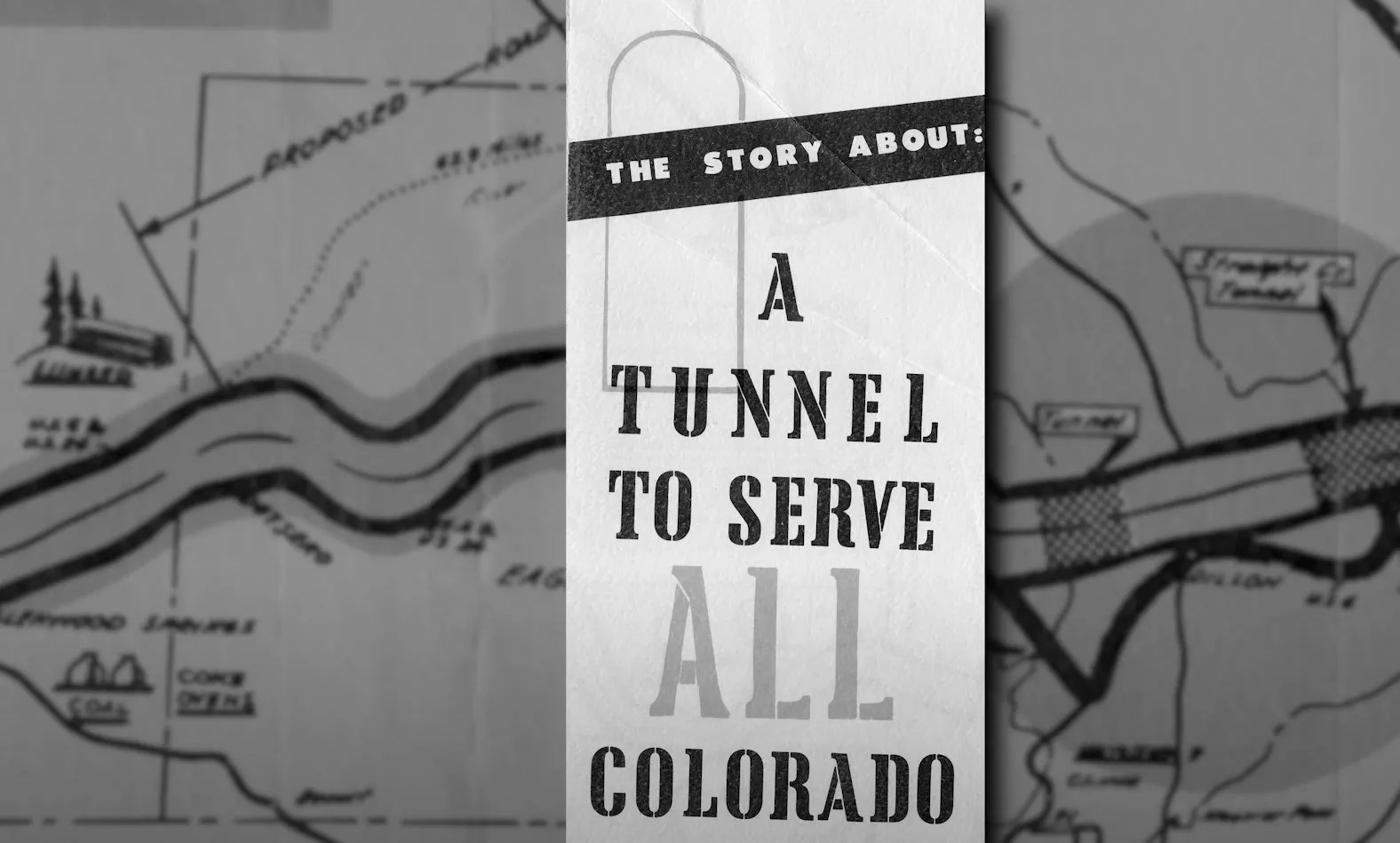
The tunnel was considered a boondoggle by some during its planning phases.
8. Average snowfall total in the area is about 26 feet from November through April. Keeping the tunnel portals free from snow is a chore, but the workers could probably make some pretty epic snowman scenes. It could be the Arapaho National Forest’s answer to the Terracotta Army of Qin Shi Huang.
9. Its reported monthly electric bill back in 2016 was $70,000. Seven years later, that’s closer to the average winter Xcel bill for a family of four.
10. It’s seen an estimated 400 million vehicles pass through it since it opened – and pretty much every one honked their horns as they did.